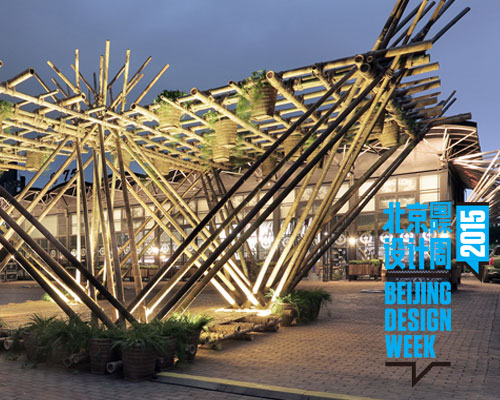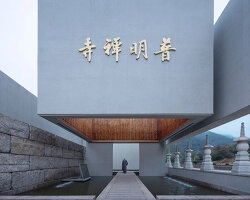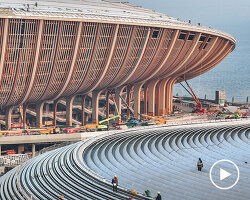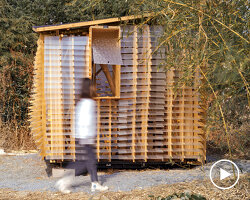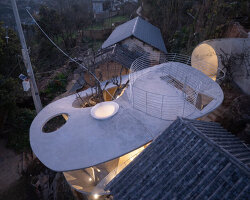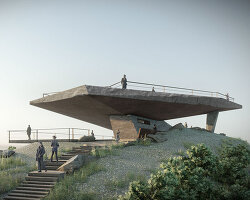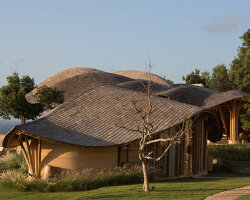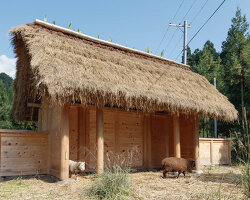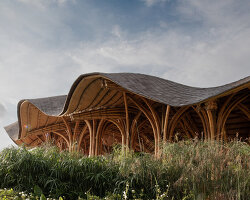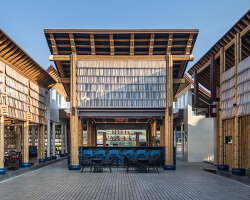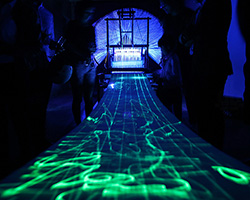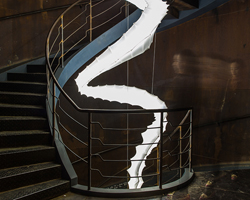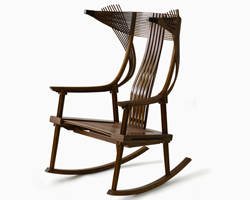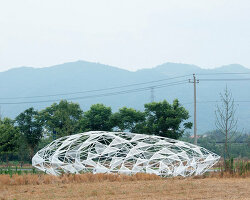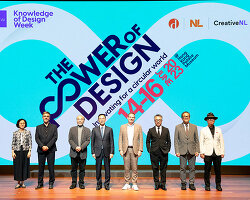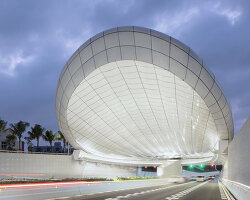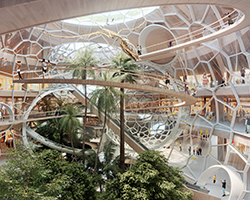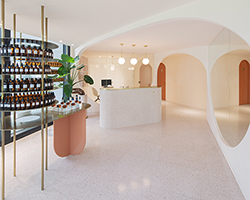penda develops ‘rising canes’ pavilion made entirely out of bamboo and ropes
photography by xia zhi
over the past year, architecture studio penda has been developing a structural system made entirely out of bamboo and ropes. the outcome of this investigation is presented during beijing design week 2015, a pavilion named ‘rising canes’. the design uses no nails or screws, and all materials are 100% recyclable. all joints are tied with ropes, which leaves the bamboo canes unharmed so they can be reused after the installation. during design week, visitors are encouraged to seed plants into baskets that are connected to the pavilion. the vegetation will use the structure to grow along, and after some time, nature will become the project’s primary design-element.
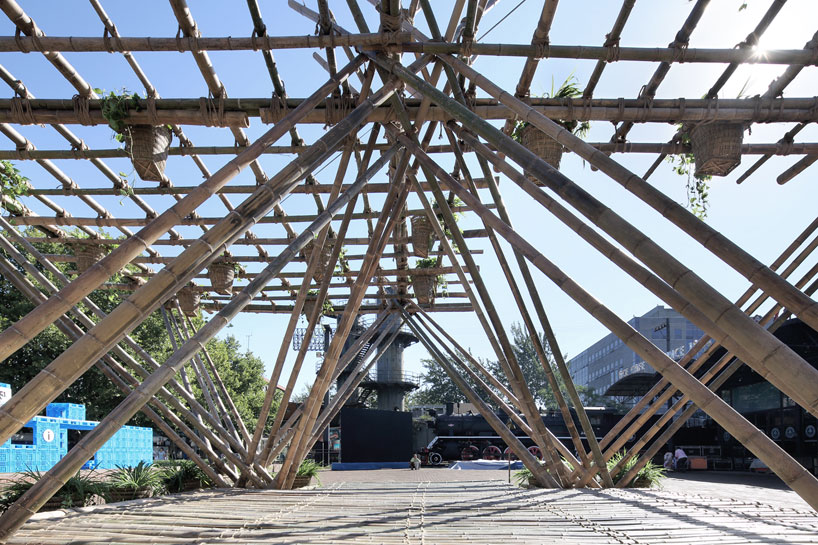
the design of the pavilion uses no nails or screws
‘this pavilion can be seen as a first step of many to follow, as the structural system is fully modular, ecological and easy to expand in every direction,’ explains penda. ‘we chose bamboo as a main construction material, as it has long traditional roots in china and is a fantastic building material, which currently leads a underrated existence in the architectural process of construction.’
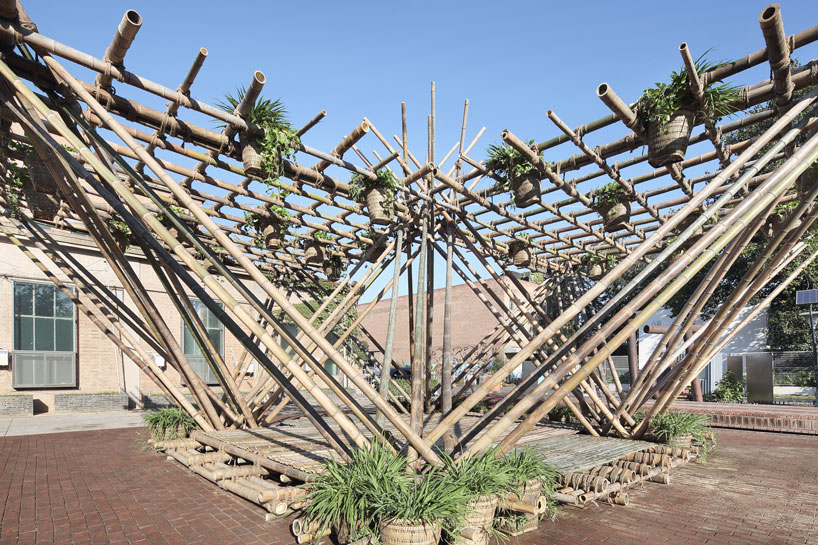
all materials used are 100% recyclable
the architects have also outlined their vision for the project for the next ten years. starting with a small structure, the individual elements get delivered to another site in order to expand its size. located in anji county — the largest export region for bamboo in the world — the system can grow to a habitat for 20 families within the first nine months. as the number of inhabitants keeps growing, the structure gets extended to accommodate multiple communal spaces, bridges and even floating structures. by 2023 the bamboo development is extended to an urban configuration, which inhabits a population of 20,000 people and a surrounding bamboo grove of 250 acres.
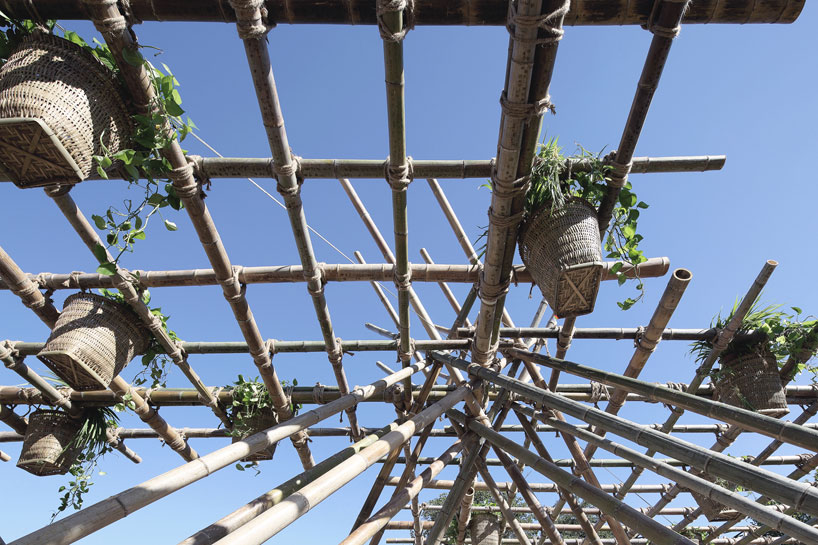
visitors are encouraged to seed plants into baskets that are connected to the pavilion
‘we believe that in present times a sustainable way of construction is more valuable than ever,’ continues penda. ‘the current state of irresponsible city planning, air-pollution and economic crisis asks the architecture profession to rethink the process of building. the use of natural materials like bamboo and connecting it in a smart, modular system, gives the structure the freedom to grow in every direction. by adding and connecting new bamboo canes, the structure grows and becomes a stronger system that is able to take on more loads to the building.’
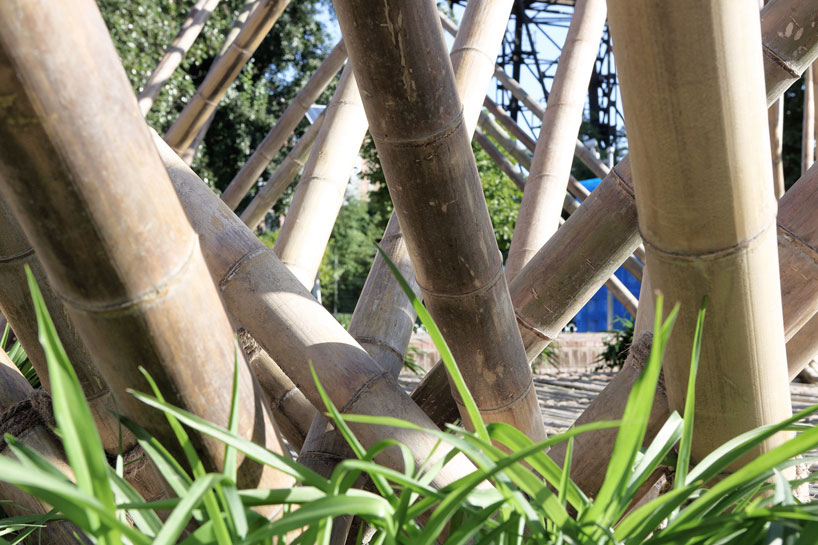
the plants will use the structure to grow along
for each culm of bamboo taken as a construction material, two new trees are planted, ensuring a steady and sustainable building material supply. this approach secures the long-term demand for building elements, and creates a lush bamboo forest surrounding the development.
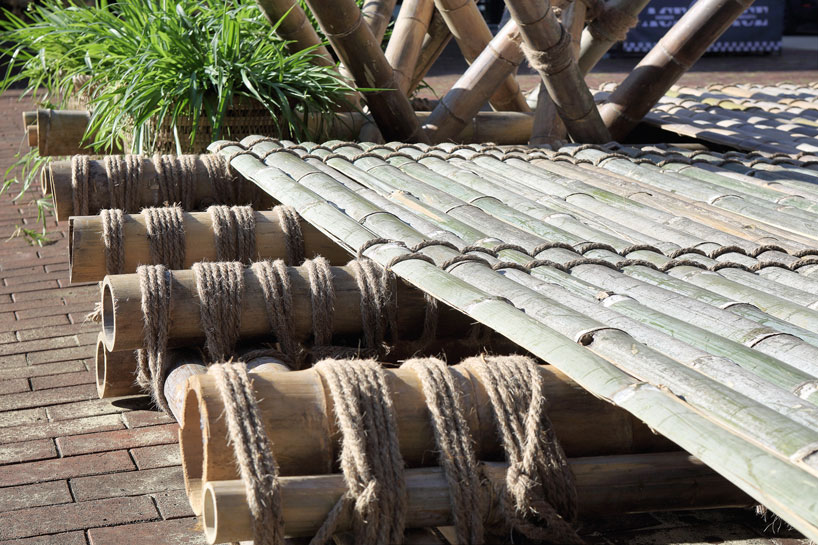
all joints are tied with ropes, which leaves the bamboo canes unharmed
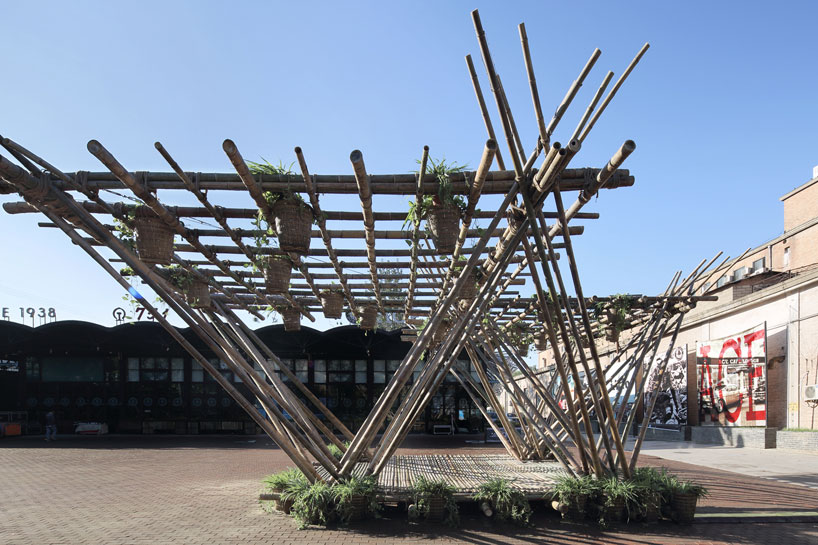
after some time, nature will become the project’s primary design-element
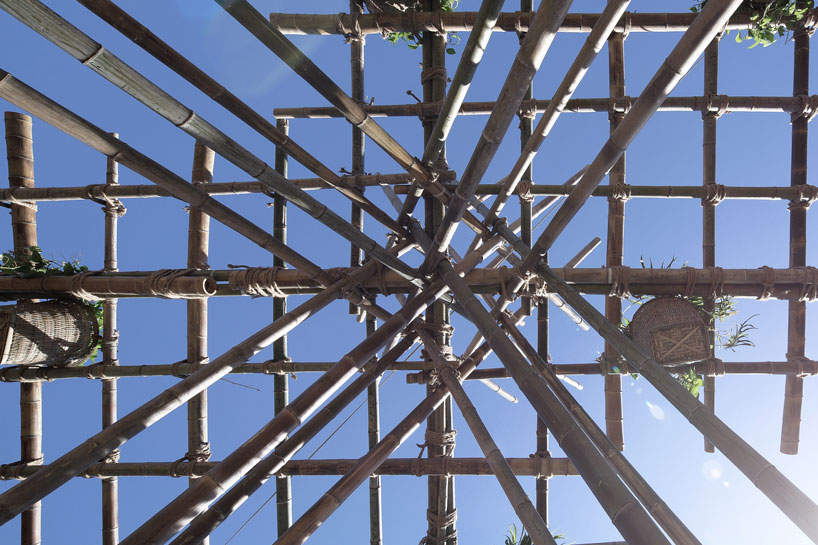
the modular system can potentially grow to a habitat for numerous families
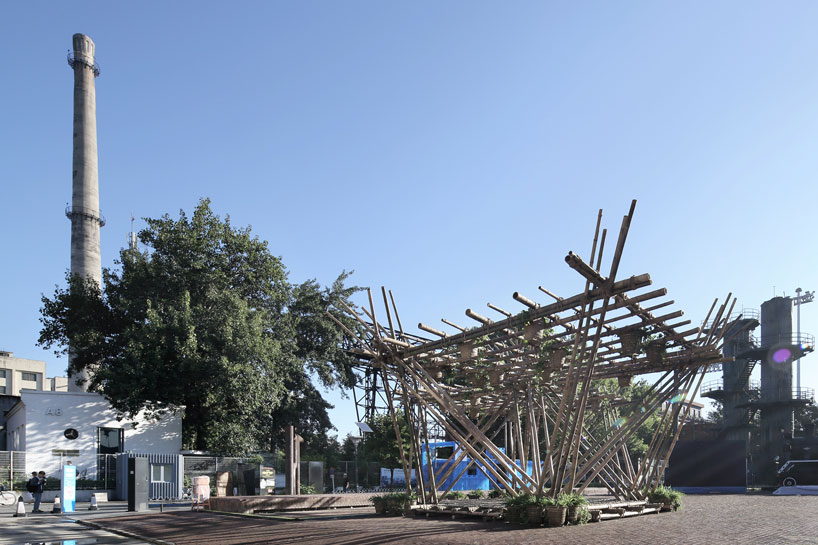
‘we believe that in present times a sustainable way of construction is more valuable than ever’ — penda
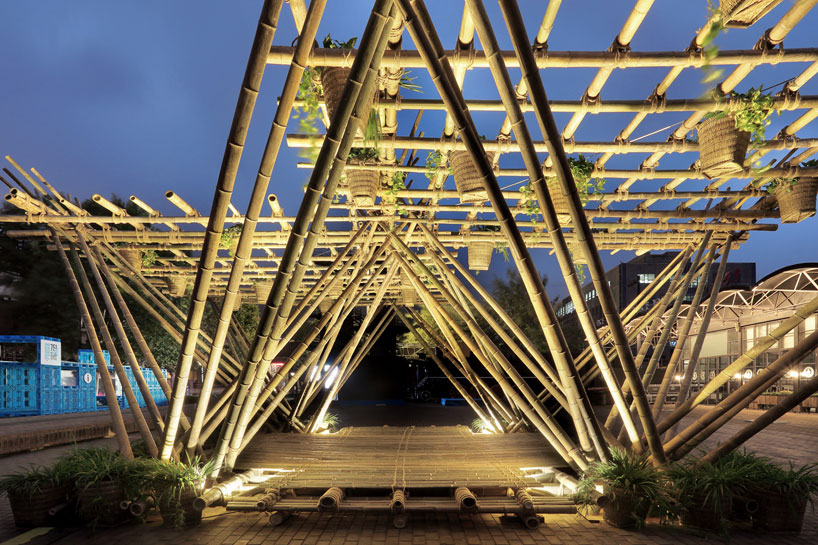
the project is being presented at beijing design week 2015








project info:
name: rising canes for beijing design week
type: residential, hotel
location: beijing 751 / anji county, china
year: 2015 – ongoing
size: varies
team: chris precht, dayong sun, kerry xie, veit burgbacher, bai xue, quan he, li pengchong, frank li, snow sun, anna andronova
photography: xia zhi
